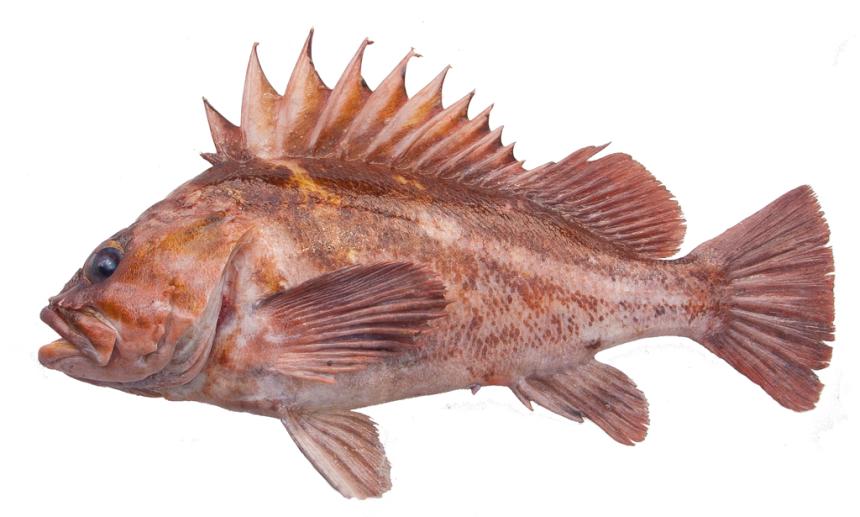Moderate-
High
Description and Range
Physical description
Copper Rockfish are moderately deep bodied and range in body color but have several common traits. They can be found in green-brown, dark-brown and copper colors, sometimes ranging into black or even bright red. key shared traits include a clearly defined, lightly colored or white band along the rear two thirds of the lateral line. Coppers also have copper, brown or yellowish bars over a white or lightly colored background emanating from the eyes, extending backwards and down to the underside of the fish which is white.
Copper Rockfish can be confused for several other species of rockfish including Canary, Quillback, and Brown. Canary share the same type of banding over the lower face and white/gray lateral line segment that Coppers have. These will appear as more of vibrant orange or yellow in Canaries compared to the relatively drab colors of a Copper.
Identifying a fish as either a Copper, Brown, or Quillback Rockfish can be difficult, especially in Puget Sound where these three species are known to hybridize. One way to separate Coppers from the other two species is to look for the bandings coming from the eye, these will be absent in the other two species. The distinct clear band over the lateral line can also help, but cannot be relied upon in the case of hybrids.
Copper Rockfish can grow up to 66 cm (26 in) in length and 4.5 kg (10 lb) in weight, living up to at least 50 years.
Geographic range
Copper Rockfish range from the northern Gulf of Alaska to central Baja California. They can be found from the subtidal zone down to 183 m (600 ft).
Juveniles spend much of their time around kelp and seagrass beds, living close to the surface if the canopy allows them to. Adults are found in deeper water, typically on sandy bottoms around patches of rock as well as on high relief rocky features. These types of habitat choices mean that Coppers are often seen near Quillback Rockfish, and are also known to cohabitate with Giant Pacific Octopus in their dens.
Climate vulnerability
Sensitivity to climate change
Moderate
The main sensitivity of copper rockfish to climate change is likely to stem from changes to their prey base. Warmer ocean conditions could lead to decreases in prey (e.g., zooplankton) for both juveniles and adults, prompting decreases in adult fecundity and juvenile survival. Additionally, nearshore habitat loss due to sea level rise could impact juvenile survival, as juveniles tend to use nearshore habitat as nursery and foraging area. Deepwater coral habitat, which many adult rockfish use, may also decrease due to acidification, further reducing available habitat. Decreased oxygen levels may have direct physiological effects on rockfish, leading to higher levels of mortality across various life stages; in the past, copper rockfish have exhibited high mortality rates during extreme hypoxic events. Due to their long life cycles and generation times, adults may be able to persist through short term pulses of negative ocean conditions (e.g., years with warmer sea surface temperature), though conversely, their low productivity could make it difficult for populations to recover from climate-related declines.
Exposure to climate change
Moderate-
High
- Increased ocean temperatures
- Sea level rise
- Declines in pH
- Decreased oxygen
Regulations
Rules and seasons
Recreational harvest within Puget Sound has been closed.
State record
- Weight
- 10.00 lbs
- Angler
- David Northington
- Location
- Point Roberts Reef, Whatcom County
- Date Caught
- August 6, 1989
